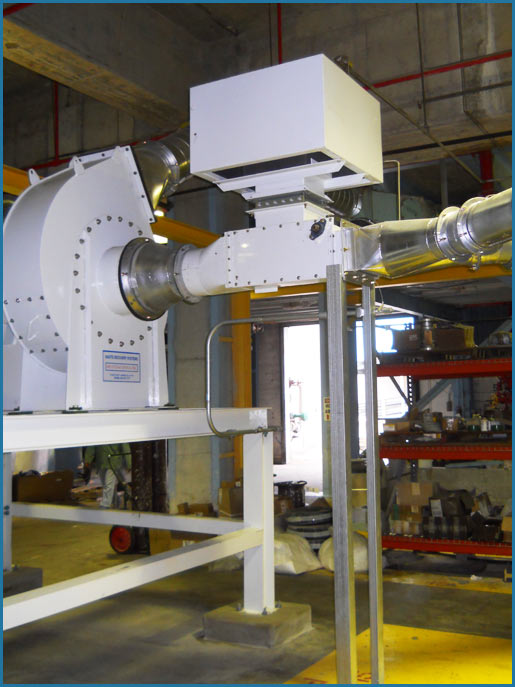Velocity Controller

VELOCITY CONTROLLERS TO REGULATE PRESSURE IN PNEUMATIC CONVEYING SYSTEMS
The velocity controller is an automatic means of regulating the suction pressure in winder applications while maintaining a constant airflow through the fan.
Due to the fact that winders have the potential of running at such high speeds, it is necessary to provide a means of regulating the amount of air being used for conveying purposes throughout the unwind and rewind process. It basically bleeds in makeup air in front of the fan system reducing the suction seen at the hoods. At startup, the blade will be placed in the down position allowing for a limited amount of air to be pulled through the hoods. This will allow for the operator to easily thread the machine. As the winder speed increases, an electronic signal (4 – 20 mA) is sent from the winder to the velocity controller and the in-line blade is adjusted accordingly.
Once the winder reaches 50% of its maximum rpm, the blade will be in the full up position thus cutting off the bleed in site and allowing for maximum suction at the hoods.
VELOCITY CONTROLLERS HAVE ALSO BEEN USED IN THE PAST ON SHEETERS THAT RUN ABNORMALLY WIDE TRIM.
In these cases, the fan systems have to be designed to have the ability and air volume to convey the widest trim width. This, however, presents a problem when threading the machine during narrower trim width sets.
The use of a velocity controller overcomes this problem by having the ability to limit suction during these narrow trim sets and maximizing suction for the widest trim sets.


